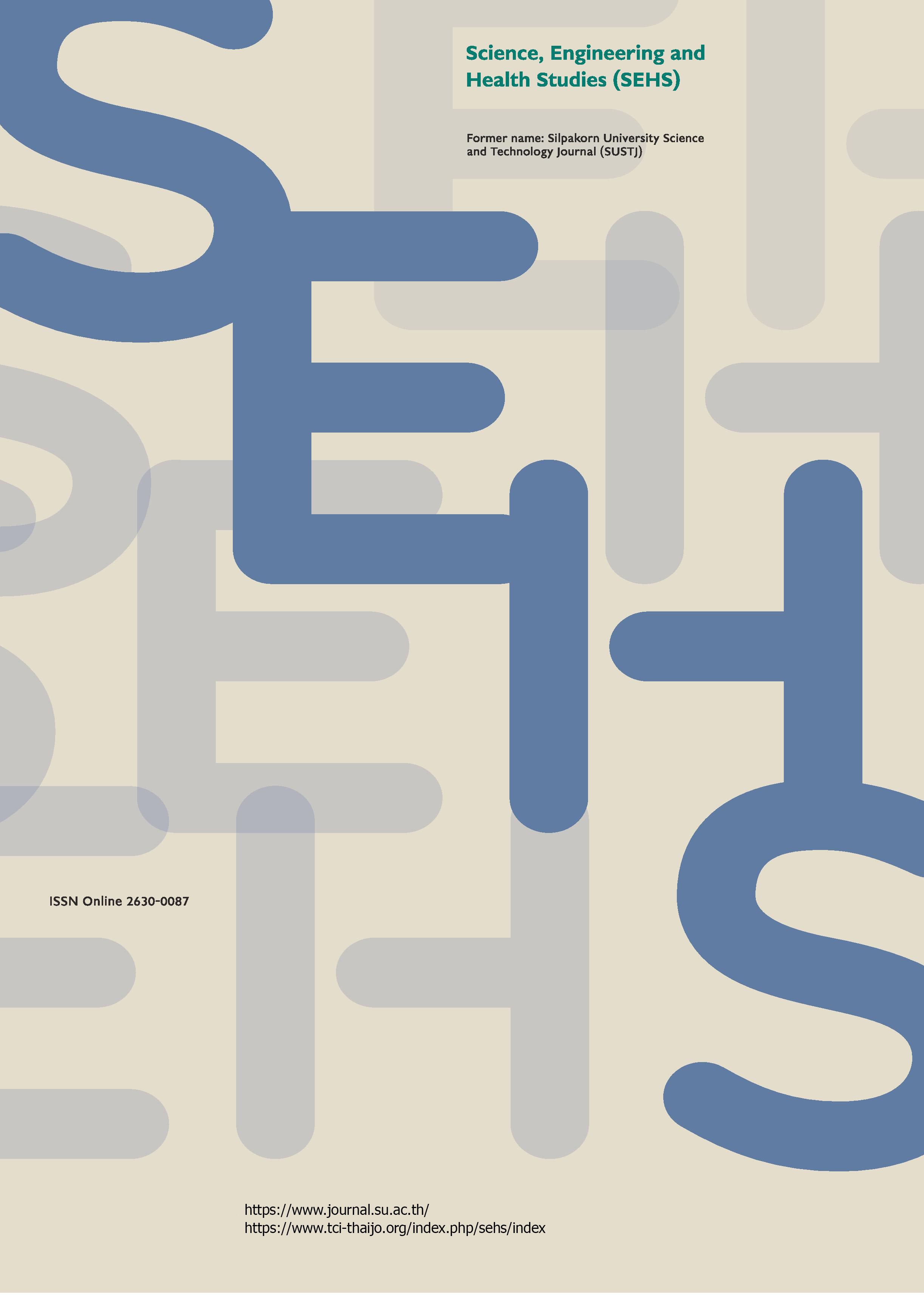Design and fabrication of low-cost capacitive sensors for salinity level detection in water
Main Article Content
Abstract
The salinity of water has a negative impact on both climate change as well as human health. Therefore, the in situ monitoring of water salinity is important. Numerous approaches, including electromagnetic inductive sensing, remote sensing, methods based on optical fiber sensors, conductive sensing (capacitive or resistive), can be used to measure the salinity of the water. This work focuses mainly on the design and fabrication of low-cost co-planar interdigitated (IDT) sensors with sensitive fringing field measurement capabilities. IDT sensors with configurations 1-1-1, 1-3-1, 1-7-1, and 1-15-1 were designed and fabricated in this work. The capacitance values for all four configurations decrease proportionally with water salinity, demonstrating a negative linear response in sensors that utilize water salinity levels as the dielectric media.
Downloads
Article Details

This work is licensed under a Creative Commons Attribution-NonCommercial-NoDerivatives 4.0 International License.
References
Akter, S. (2019). Impact of drinking water salinity on children’s education: Empirical evidence from coastal Bangladesh. Science of the Total Environment, 690, 1331–1341.
Alam, A., Ullah, H., Attia, A., and Datta, A. (2020). Effects of salinity stress on growth, mineral nutrient accumulation and biochemical parameters of seedlings of three citrus root-stocks. International Journal of Fruit Science, 20(4), 786–804.
Baath, G. S., Shukla, M. K., Bosland, P. W., Steiner, R. L., and Walker, S. J. (2017). Irrigation water salinity influences at various growth stages of Capsicum annuum. Agricultural Water Management, 179, 246–253.
Bhat, S. (2005). Salinity (conductivity) sensor based on parallel plate capacitors. Doctoral dissertation. University of South Florida, United States.
Briggs, S. V., and Taws, N. (2003). Impacts of salinity on biodiversity—clear understanding or muddy confusion? Australian Journal of Botany, 51(6), 609–617.
Corwin, D. L. (2021). Climate change impacts on soil salinity in agricultural areas. European Journal of Soil Science, 72(2), 842–862.
Dasgupta, S., Huq, M., and Wheeler, D. (2016). Drinking water salinity and infant mortality in coastal Bangladesh. Water Economics and Policy, 2(1), 1650003.
Gadani, D. H., Rana, V. A., Bhatnagar, S. P., Prajapati, A. N., and Vyas, A. D. (2012). Effect of salinity on the dielectric properties of water. Indian Journal of Pure & Applied Physics, 50, 405–410.
Goswami, M. P., and Sarma, U. (2015). Analog frontend for fringe field capacitive soil moisture sensor. Journal of Basic and Applied Engineering Research, 2(19), 1698–1702.
Goswami, M. P., Montazer, B., and Sarma, U. (2018). Design and characterization of a fringing field capacitive soil moisture sensor. IEEE Transactions on Instrumentation and Measurement, 68(3), 913–922.
Islam, T., Maurya, O. P., and Khan, A. U. (2021). Design and fabrication of fringing field capacitive sensor for non-contact liquid level measurement. IEEE Sensors Journal, 21(21), 24812–24819.
Master, A. (2010). Design and implementation of a signal conditioning operational amplifier for a reflective object sensor. Master’s thesis. University of Tennessee, United States.
Metternicht, G. I., and Zinck, J. (2003). Remote sensing of soil salinity: Potentials and constraints. Remote sensing of Environment, 85(1), 1–20.
Mizuguchi, J., Piai, J. C., de França J. A., de Morais França M. B., Yamashita, K., and Mathias, L. C. (2015). Fringing field capacitive sensor for measuring soil water content: Design, manufacture, and testing. IEEE Transactions on Instrumentation and Measurement, 64(1), 212–220.
Mohanavelu, A., Naganna, S. R., and Al-Ansari, N. (2021). Irrigation induced salinity and sodicity hazards on soil and groundwater: An overview of its causes, impacts and mitigation strategies. Agriculture, 11(10), 983.
Peddinti, S. R., Hopmans, J. W., Najm, M. A., and Kisekka, I. (2020). Assessing effects of salinity on the performance of a low-cost wireless soil water sensor. Sensors, 20(24), 7041.
Qian, Y., Zhao, Y., Wu, Q.-L., and Yang, Y. (2018). Review of salinity measurement technology based on optical fiber sensor. Sensors and Actuators B: Chemical, 260, 86–105.
Rahimi, L., Amanipoor, H., and Battaleb-Looie, S. (2021). Effect of salinity of irrigation water on soil properties (abadan plain, SW Iran). Geocarto International, 36(16), 1884–1903.
Rahman, M. H., Lund, T., and Bryceson, I. (2011). Salinity impacts on agro-biodiversity in three coastal, rural villages of Bangladesh. Ocean & Coastal Management, 54(6), 455–468.
Sharma, C., Dey, A., Khatun, H., Das, J., and Sarma, U. (2023). Design and development of a gas sensor array to detect salinity stress in Khasi Mandarin Orange plants. IEEE Transactions on Instrumentation and Measurement, 72, 2006409.
Wu, S., Lan, H., Liang, J.-J., Tian, Y., Deng, Y., Li, H.-Z., and Liu, N. (2015). Investigation of the performance of an inductive seawater conductivity sensor. Sensors & Transducers Journal, 186(3), 43–48.


